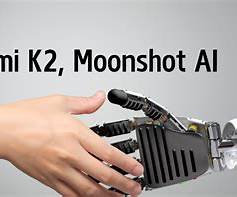Kimi K2 vs. DeepSeek: The New Titans of Chinese AI Clash
Move over, the AI landscape just got a lot more interesting. For the past year, the global conversation has been dominated by a few big names from the US. But a powerful new wave of AI models is emerging from China, and they are not just playing catch-up—they’re pushing the boundaries in specific, incredibly useful ways.
Two names, in particular, are generating massive buzz: the newly announced Kimi K2 from Beijing-based Moonshot AI, and the formidable DeepSeek from DeepSeek Company.
Having tested both, I’m here to break down this fascinating clash of the titans. It’s not just about which one is “better,” but about which one is better for you.
The Contender from Beijing: Kimi K2 – The Context King
Kimi first made its name not with generic chat, but with a single, killer feature: an unbelievably long context window. While most models struggled with long documents, Kimi could effortlessly digest and analyze a 200,000-word novel or a complex technical manual.
With Kimi K2, Moonshot AI has taken this superpower and put it on steroids.
- The “Million-Character” Context: K2 reportedly supports a context window of 2 million tokens. To put that in perspective, that’s the equivalent of over 1,000 pages of dense text. You can upload entire codebases, lengthy legal contracts, or a series of research papers and have Kimi draw connections across all of them.
- Multimodal Understanding: K2 isn’t just about text. It can “see” and understand the content within images, charts, and PDFs, making it a powerhouse for document analysis. Need to extract data from a scanned financial report? Kimi K2 is your go-to.
- Strong Reasoning: Built on a sophisticated Mixture-of-Experts (MoE) architecture, K2 demonstrates strong logical reasoning and problem-solving capabilities, especially when the problem requires sifting through vast amounts of information.
In short: Think of Kimi K2 as the ultimate research assistant and data archaeologist. It excels when the answer is buried in a mountain of information.
The Established Powerhouse: DeepSeek – The Open & Prolific All-Rounder
DeepSeek has taken a different, equally impressive path. It has positioned itself as a leader in open-access, high-performance AI.
- Freemium Model Done Right: DeepSeek offers a incredibly capable model for free. Its 128K context window is generous and more than enough for most tasks. This open approach has rapidly built a massive user base and a strong developer community.
- Top-Tier Performance: Don’t let the “free” tag fool you. DeepSeek consistently ranks among the top global models on standard benchmarks, competing with and often surpassing other leading proprietary models in reasoning, coding, and math.
- Strong Coding Capabilities: DeepSeek has a particular strength in code generation and explanation. Many developers have found it to be an indispensable pair programmer.
- Web Search Integration: A key feature is its built-in web search functionality, allowing it to pull in fresh, real-time information—a crucial advantage for answering questions about current events.
In short: Think of DeepSeek as the brilliant, accessible, and versatile generalist. It’s the Swiss Army knife of AI—great at coding, great at chat, and always connected.
Head-to-Head: Where They Shine
| Feature | Kimi K2 | DeepSeek |
|---|---|---|
| Core Strength | Ultra-long-context analysis & document digestion | Versatile reasoning, coding, and real-time knowledge |
| Context Window | Extremely Long (Reported 2M tokens) | Very Long (128K tokens) |
| Multimodality | Yes (Image to Text understanding) | Yes (Image to Text understanding) |
| Web Search | Not a primary feature | Yes (Integrated and reliable) |
| Access & Cost | Details emerging, likely more limited access | Extremely accessible (Strong free tier) |
| Ideal For | Researchers, analysts, legal, academia | Developers, students, general users, content creators |
So, Which One Should You Choose?
Your choice depends entirely on your primary use case.
You need Kimi K2 if:
- Your work involves analyzing massive documents—think legal discovery, academic literature reviews, or due diligence on large code repositories.
- The core of your task is finding needles in a haystack of text. Kimi K2 is the haystack specialist.
You need DeepSeek if:
- You want a powerful, all-around AI assistant for day-to-day tasks—coding, writing, brainstorming, and learning.
- You need up-to-date information via web search.
- You value accessibility and cost (free is a very compelling price point).
The Bigger Picture: A Thriving Chinese AI Ecosystem
The rise of both Kimi and DeepSeek signals a maturing and highly competitive AI landscape in China. They are not mere clones; they are innovative models carving out distinct identities.
Kimi K2 is pushing the entire industry forward on the technical frontier of context length. DeepSeek is democratizing access to top-tier AI, forcing everyone to reconsider their pricing and open-source strategies.
For us, the users, this competition is a win. It means more choice, more innovation, and more powerful tools at our fingertips. The era of a single, dominant AI model is over. The future is a diverse ecosystem of specialized giants.
My advice? Use both.
Let DeepSeek be your daily driver for its versatility and speed. And when you encounter a problem too big for any other model, call in the context king—Kimi K2.
What about you? Have you tried Kimi or DeepSeek? Which one fits your workflow better? Let me know in the comments!
